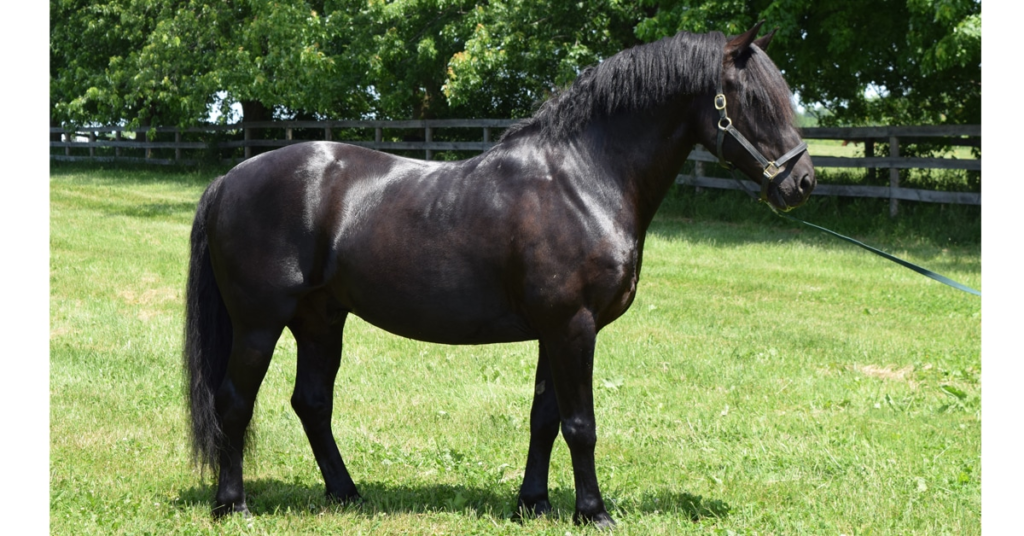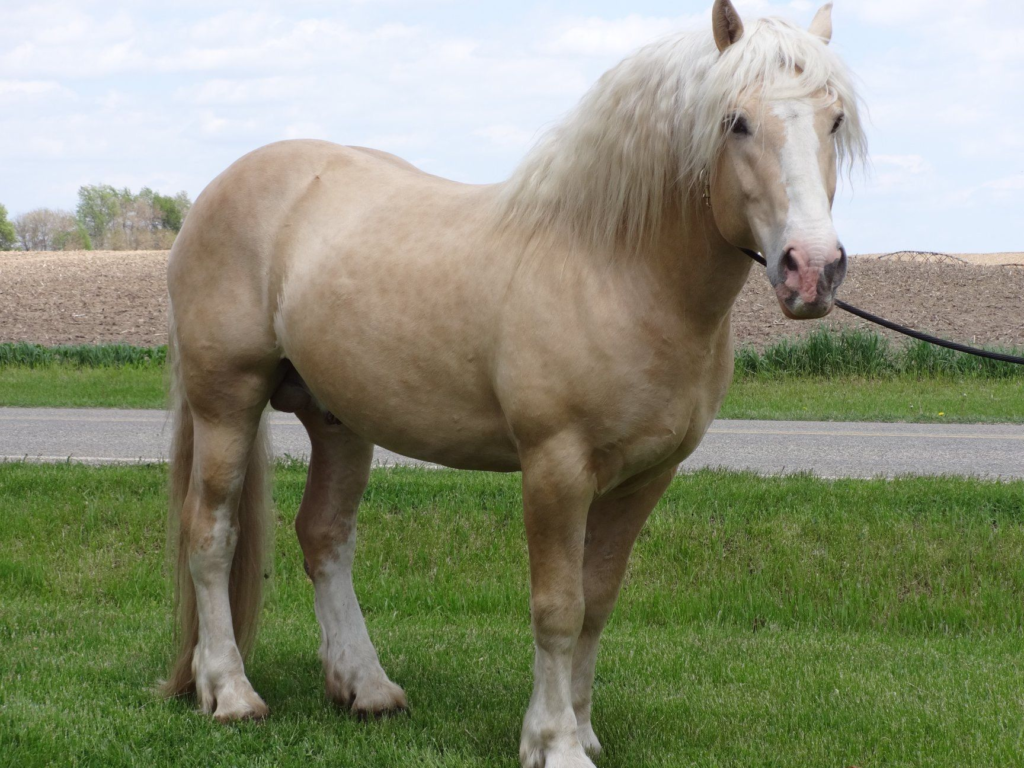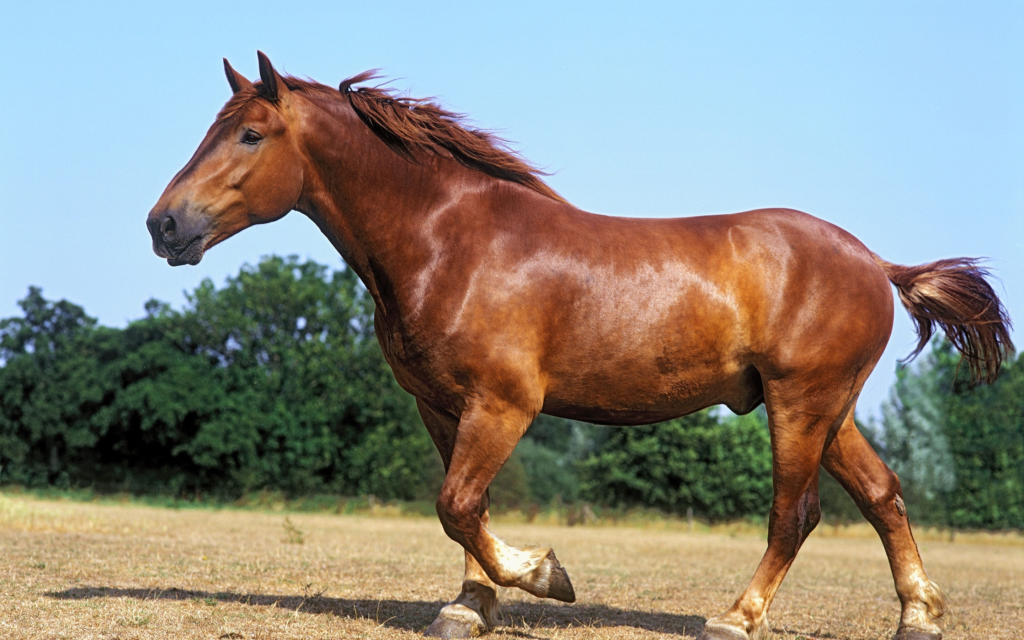Last Updated on December 14, 2023 by Fumipets
The world of horses encompasses diverse breeds, each with unique characteristics and histories. Some breeds, however, stand out for their rarity, often due to declining populations, geographic isolation, or specific breeding requirements. These rare horse breeds carry cultural significance and attract enthusiasts who work to preserve and promote their existence.
Rarest Horse Breeds
Since ancient times, horses have improved humankind’s way of life. Currently, there are more than 350 different horse breeds in the world, and more are being created every year. Several of these breeds are well-known worldwide. Others, though, are so uncommon that hardly anybody has ever heard of them.
10 of the world’s rarest horses are included on our list. With fewer than 250 of each remaining on the globe, the Newfoundland pony, the Dales pony, and the Sorraia horse are the rarest and most severely endangered. The other endangered horse breeds may be found all across the world, from Portugal to Canada.
The 10 Rarest Horse Breeds in the World in 2023
1. The Canadian Horse

The Canadian horse is so called because it is regarded as Canada’s national animal. They came more than 350 years ago when King Louis XIV of France, who was in power at the time, sent a shipload of horses. That region of Canada was referred to as New France in 1665 and was predominantly colonized by his subjects.
Even though the shipload of horses included a variety of breeds, they ultimately bred together to become the Canadian horse. Because they are developed strong and quickly, modern Canadian horses are usually employed as showjumpers or racehorses.
These people are still attempting to unite all these years after the American Civil War almost devastated them. Due of its toughness, this breed was mostly utilized in battle. There are 6,000 Canadian horses registered now around the globe. Due to the fact that only 150 to 500 new registrations occur each year, they are still in risk of becoming extinct.
2. Dales Pony

The Dales region of northern England is where the Dales Pony was first developed. They were initially developed for usage by lead miners and are a short, stocky breed. They assisted in transporting the ore from the mines to North Sea shipping ports.
These ponies are widely employed as harness horses because of their remarkably quick, graceful, and nimble nature. The fact that we presently only have 300 horses is due to yet another battle. This breed was on the verge of extinction when World War II broke out. Few of the devoted ponies that the English Army took away for heavy-duty labour ever came back.
Dales ponies are often black, harkening back to their mining era. Additionally, they come in brown, gray, bay, and roan colors.
3. Newfoundland Pony

The term “Newfoundland Pony” comes from Newfoundland, Canada, where they most recently bred. They may also be found in the province of Labrador. They are Irish, Scottish, and from northern England originally. After being sent across the ocean for Western settlers, they were mostly utilized as draft horses.
They are a kind and powerful breed of horses. They are mostly utilized as riding and show ponies nowadays. Horse butchering and automation almost doomed them to extinction. With about 200 to 250 of them left, their population is now highly threatened.
4. Akhal-Teke

Due to its gorgeous coat, the Akhal-Teke is perhaps the horse on this list with the most recognition. They are available in cream, bay, chestnut, black, and grey. The cream is the most often used since it highlights the metallic sheen that is distinctive of this horse’s coat.
The Akhal-Teke is a breed of horse that is native to Turkmenistan, where it is regarded as the national horse. They were first created thousands of years ago as a result of the dryness of Central Asia, allowing nomadic tribes to traverse large distances rapidly. They are among the oldest horse breeds still in existence.
Even though the Akhal-Teke were cherished for a long time in Central Asia, they are now in danger owing to inbreeding.
5. American Cream Draft Horse

The American Cream horse, unlike the majority of modern horse breeds, has only one color: a gorgeous champagne-cream coat and amber eyes. When properly cared for, they have a lovely look and make outstanding show horses. Despite their stunning appearance, they are nevertheless a declining breed as a result of agricultural modernization.
The fact that these horses were just created in the 20th century is one of the factors contributing to their demise. Their brief career coincided with the majority mechanization of agriculture, which contributed to their poor reputation as breeders. Despite being the only draft breed horse native to America, there are presently just 2,000 of these horses surviving in existence.
6. Caspian Horse

One of the world’s oldest breeds is the Caspian horse. Artwork depicting them dates back to about 3,000 B.C. The breed is native to Iran, where they presently enjoy extensive protection as a national treasure. They stand at around 11 HH, have lean, muscular physique, and weigh between 400 and 600 pounds.
It was thought that the Caspian horse had vanished for roughly 1,300 years. But in the untamed regions of northern Iran, researchers made a shocking discovery in 1965. These horses have since been diligently marketed and safeguarded, and their numbers have been constantly growing. Globally, there are currently less than 2,000 of them, but conservation initiatives hope to increase their numbers every year.
7. Suffolk Punch Horse

For difficult work, horses have been utilized for thousands of years. This led to the development of draft horses, with the Suffolk Punch being among the earliest of these powerful draft horses. They were created in Suffolk County, England, in the 18th century to plow through the area’s dense clay soil. They have a lot of stamina, are gentle, and are in good health.
The Suffolk Punch horse was heavily enlisted into the military during World War II as a result of all these qualities. They were supplanted by robots after the war, and their breeding was abandoned. They are in the severely endangered category because there are only around 600 of them in the United States and 200 in the United Kingdom.
8. Hackney Horse

A regal and dignified breed, the Hackney horse. They are ballerina-like poised in the show ring and are recognized for being athletes through and through. They thrive in dressage and showjumping and have exceptional endurance when trotting at high speeds.
In Norfolk, England, around the 14th century, the Hackney horse was created. They were designed to draw the carriages of the elite, and they swiftly became a representation of society’s wealthiest people. They were often harness racers in the 19th century, but they faded from prominence as tougher horse standards rendered the breed unattractive in the races.
Their population has reached a critical level since they no longer serve an elegant or athletic function. Less than 300 of these horses are still in existence.
9. Eriskay Pony

Close your eyes and picture a horse standing at the top of Scotland’s highland plains with their hair being ruffled by the wind as it sweeps over the landscape. Most likely, the Eriskay pony is what you had in mind.
They were first referred to as the Western Isle Pony and are indigenous to Scotland’s Hebridian Islands. They are renowned for their generally placid disposition despite having acclimated to the harsh, chilly circumstances in the far north of the U.K.
The islanders value these horses much. For many years, they have been used to promote their way of life by pulling carts, hauling gathered seaweed, and transporting children to school. As individuals now have speedier automobiles to do these tasks, their popularity has decreased. These horses are now down to less than 300.
Fortunately, they are great for equine therapy and are making a return thanks to conservation initiatives and their placid demeanor.
10. Shire Horse

Although when we think of the Shire, we would picture New Zealand, these horses are distinctly British. They were utilized for a variety of tasks, including agricultural labor, rubbish collection, military employment, and drawing the royal carriages. They were acclaimed as working-class heroes.
Shire horses are well-built and have calm dispositions. They served as the model for “War Horse” in George Orwell’s “Animal Farm” novel. Sadly, despite their prior notoriety, they are now regarded as severely endangered. In Britain, they are not yet protected, and if they are not preserved, they might completely vanish in ten years.
Questions and Answers About the Rarest Horse Breeds:
What defines a horse breed as “rare”?
A horse breed is considered rare based on factors such as a small global population, limited geographical distribution, or unique breeding characteristics. Rarity can be influenced by historical events, changes in agriculture, or declining interest in certain breeds.
Which are some examples of rare horse breeds?
Examples of rare horse breeds include the Caspian Horse, known for its small stature and ancient lineage; the Suffolk Punch, a draft horse breed with a dwindling population; and the Akhal-Teke, a Turkmenistan breed prized for its endurance and distinctive coat.
What contributes to the decline of rare horse breeds?
Decline in population can result from factors such as reduced demand for specific traits, changes in agricultural practices favoring machinery over horses, or geographic isolation limiting breeding opportunities. Lack of recognition and conservation efforts can also contribute to decline.
How are enthusiasts working to preserve rare horse breeds?
Preservation efforts include establishing breed registries, promoting breed awareness, and encouraging responsible breeding practices. Dedicated breed enthusiasts and organizations often collaborate to raise awareness, document bloodlines, and ensure the genetic diversity and survival of rare breeds.
Are rare horse breeds suitable for specific purposes?
Rare horse breeds can be versatile, with some developed for specific tasks such as draft work, riding, or cultural ceremonies. While they may not be as common as popular breeds, their unique traits make them valuable for enthusiasts seeking distinctive characteristics and historical connections.


















